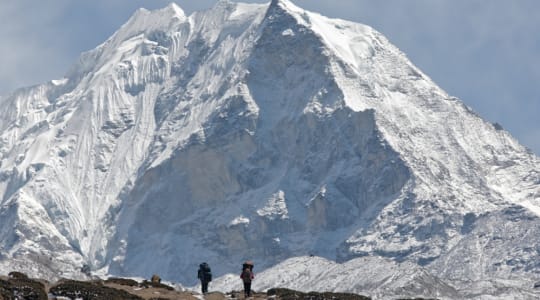
Island Peak, also known as Imja Tse, is a popular climbing peak located in the Himalayas of Nepal. The mountain has an elevation of 6,189 meters (20,305 feet) above sea level and is known for its stunning views of nearby peaks, including Lhotse, Nuptse, and Ama Dablam.
The peak was first climbed in 1953 by a British expedition led by Eric Shipton, and it has since become a popular destination for climbers and trekkers visiting the Khumbu region of Nepal. The mountain is named Island Peak because it appears as an island in a sea of ice when viewed from Dingboche, a small village in the Khumbu region.
Climbing Island Peak is considered a challenging but achievable goal for experienced trekkers with some mountaineering experience. The climb involves technical sections of ice and rock, but no prior climbing experience is required. Climbers are required to have a basic understanding of mountaineering techniques, such as using crampons and ice axes.
The standard route to the summit of Island Peak involves a trek to the Everest Base Camp, followed by a climb up the Imja Khola Valley to the peak's base camp. From there, climbers ascend the peak's south face, which involves crossing the Imja Glacier and climbing a steep snow and ice slope. The final ascent involves a climb up a rocky ridge to the summit.
Explore Near Island Peak (Imja Tse)
Discover 5 attractions within 75km. Perfect for planning day trips, finding connecting flights, or discovering new destinations to explore during your visit.
Nearby Attractions & Places to Visit
5 destinations within 4.6km - 12.2km from your location





Cross-Border Adventures Near Island Peak (Imja Tse)
Discover cross-border adventures near Island Peak (Imja Tse). Explore neighboring countries with similar attractions and extend your travel experience across borders.

